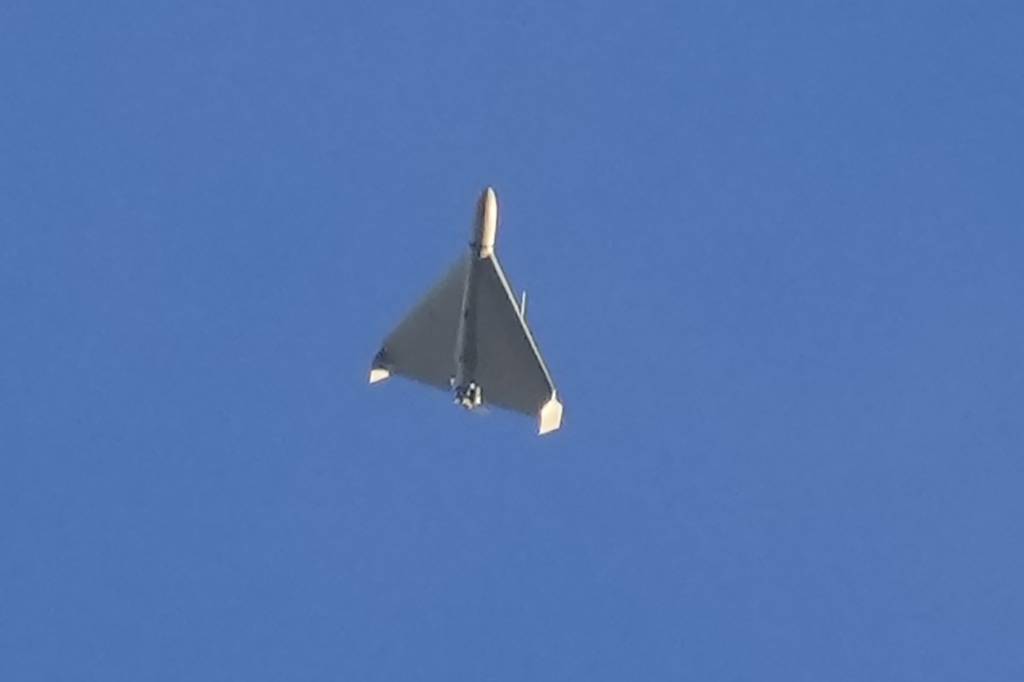Even as the United States is sprinting to provide Ukraine with the means to defend itself, American-made components are ending up in Iranian drones that Russia is using to kill Ukrainians and support the Kremlin’s unprovoked invasion. To make matters worse, Tehran and its terror proxies are also using drones containing Western technology to target Americans and our partners in the Middle East.
To address this unacceptable situation, a bipartisan group of House lawmakers last week introduced the Block the Use of Transatlantic Technology in Iranian Made Drones Act of 2023. The bill requires the Commerce Department and State Department to develop and submit to Congress strategies designed to stop the flow of components to Tehran used in the Iranian drones.
For its part, the Pentagon would be required to “develop a range of options that may be employed by the Armed Forces of the United States to counter or otherwise deny Iran the ability to acquire technologies†for its drones.
It is easy to see why Congress is motivated to act. As most know by now, Iran has provided hundreds of drones to Russia for use in Moscow’s war against Ukraine, with evidence of their use on the battlefield first surfacing in September.
In November 2022, the Conflict Armament Research group assessed that 82% of the components in downed Iranian drones and a precision-guided munition of Iranian origin recovered by Ukraine were produced by U.S.-based firms. Additionally, Ukrainian intelligence revealed that a whopping 40 of an estimated 52 components found in a downed Iranian drone were produced by 13 American firms.
Iranian drones have supplemented cruise and ballistic missile attacks on Ukraine’s critical infrastructure, as Russian stockpiles of traditional munitions have dwindled significantly since the war began. While the Iranian drone threat may have previously seemed distant for Europe, the appearance of these weapons in Ukraine has brought the problem home.
Unfortunately, attacks from Iranian drones are not a new reality in the Middle East, including against U.S. troops. On March 23, for example, Iran-backed groups used an Iranian-origin drone against a U.S. base in northern Syria, killing one U.S. contractor and injuring five service members.
That attack was hardly a one-off event. U.S. Defense Secretary Lloyd Austin recently told Congress that Iran-backed groups have struck U.S. positions in Syria and Iraq 83 times since January 2021. Many of these attacks involved Iranian drones.
U.S. partners in the Middle East have not been immune from attacks using Iranian drones, either. In September 2019, Tehran launched a combination of drones and low-flying cruise missiles at Saudi oil installations in Abqaiq and Khurais, knocking out 5.7 million barrels per day of oil production.
A U.N. Panel of Experts on Yemen investigated the debris from this and an earlier drone attack on Saudi oil installations. The panel discovered parts from the wreckage of a delta-wing drone originated in at least seven countries, including the United Kingdom and/or Poland, Sweden, Italy, Japan, Ireland, South Korea, and the United States.
In September 2022, Tehran launched a barrage of drones and close-range ballistic missiles at Kurdish regions of northern Iraq, killing one U.S. citizen. The Iran-backed Houthis in Yemen have launched hundreds of Iranian-made or Iranian-designed drones at Saudi Arabia over the past several years.
The body of evidence collected from downed Iranian-origin drones in Ukraine and the Middle East make it likely that many of the drones used to attack Americans and their partners in the Middle East contain parts made by American companies.
That should not happen. So what’s to be done?
To be fair, the Biden administration has established a task force to investigate how Iran has been able to acquire U.S. and Western components used in drones. But one thing is already clear: The task force’s actions are belated and thus far insufficient.
The first step is to ensure that Washington, Kyiv and U.S. partners in the Middle East are sharing as much information as possible regarding how Iran acquires drone components, the networks it uses to proliferate drones, and the best ways to detect and defeat Iranian drones once launched. That’s where the new legislation and increased interagency action and coordination could help.
Building a combined security architecture in the Middle East that prioritizes air defense — and includes the U.S. military, Gulf Cooperation Council partners and eventually Israel — would be an important additional step.
The Pentagon should also redouble and expedite efforts to strengthen American air defenses to detect and destroy Iranian drones. U.S. troops in harm’s way deserve nothing less.
The State and Defense departments should also work to expedite the deliveries of air defense assets to Arab partners, lest they be forced to procure similar systems from countries such as Russia or China, making the establishment of an effective regional security architecture more difficult or impossible.
Simultaneously, the United States and its partners must work together to map and block Iranian drone supply networks and plug any holes.
But if past is prologue, if the legislation becomes law, the strategies and options submitted to Congress will likely lack substance or specificity. To discourage such an outcome, the legislation’s sponsors may want to consider tasking the comptroller general at the Government Accountability Office to independently assess in written and unclassified form both the administration’s responses and the implementation of any recommendations.
Americans are right to expect that American-made technology and parts are not used by our enemies to attack our troops and our partners. Unfortunately, barring urgent additional action, we should expect more of the same in the future.
Ryan Brobst is a research analyst at the Foundation for Defense of Democracies, where Bradley Bowman is the senior director of its Center on Military and Political Power and Behnam Ben Taleblu is a senior fellow.








